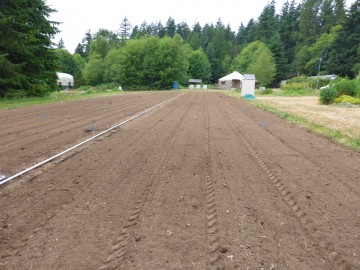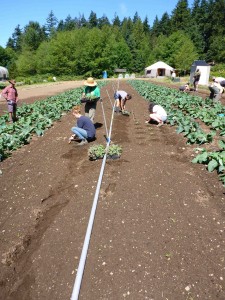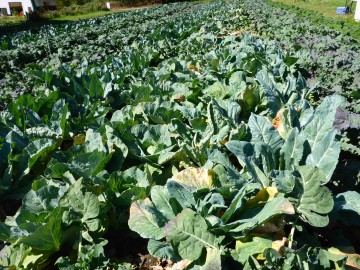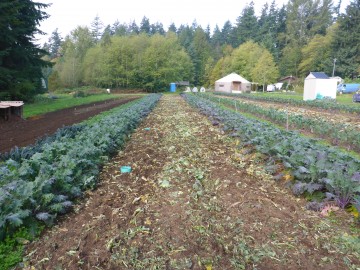Project Lead: Gabriel Maltais-Landry
Project Type: Postdoctoral research
Supervisor: Dr. Sean Smukler
Project Partner: UBC farm
Background
Nitrogen (N) and phosphorus (P) are the two nutrients that most often limit agricultural productivity. Mineral fertilizers are effective at alleviating nutrient limitation but they do not recycle nutrients effectively within agroecosystems, and they often have a low nutrient-use-efficiency (NUE). In contrast, organic amendments (e.g., composts and manures) recycle nutrients within agroecosystems, reduce the need for external nutrient inputs, and add carbon (C) that contribute to soil organic matter (SOM). However, most organic amendments are enriched in P relative to N compared to plant needs (N:Pamendment < N:Pcrops). This results in either adequate P fertilization, N under-fertilization, and typically lower yields, or adequate N fertilization, P over-fertilization, and higher risks of soil P losses and downstream eutrophication.
Hybrid systems combine organic amendments with other fertility sources, typically N-rich fertilizers, which can help reduce this N:P imbalance. However, these systems are more complex to manage given the use of multiple inputs with variable nutrient availability. Furthermore, in certified organic agriculture, expensive fertility sources (e.g., blood and feather meal) must be used instead of synthetic fertilizers. Finally, adding a nutrient pulse in agroecosystems will modify nutrient availability as well as the stoichiometry of nutrient inputs, which will impact mineralization rates of organic amendments as well as SOM. This should affect greenhouse gas (GHG) emissions of carbon dioxide (CO2) and nitrous oxide (N2O), with potential trade-offs between nutrient availability and GHG fluxes.
There is therefore a strong motivation to optimize the use of organic amendments and determine if hybrid systems can help maximize N availability, prevent P over-fertilization, and provide C inputs to maintain soil organic matter.
Experimental design
We established a field experiment at the UBC farm to address this question, looking at four different treatments:
- Control: Municipal compost to meet crop P demand;
- Municipal compost to meet crop N demand (6.5 times more compost than the control treatment);
- Composted poultry manure to meet crop N demand;
- Hybrid system: control treatment enriched with a N-rich fertilizer (blood meal) to match crop N requirements.
Each treatment is replicated in four 5.5m by 6.1m (18ft x 20ft) plots randomly assigned within a production field located at the UBC farm. We are growing a Brassica polyculture (cauliflower, cabbage, brokali, kale) in the summer of 2015, a rye-clover cover crop in the fall of 2015 until the spring of 2016, and a squash monoculture in the summer of 2016. Within each of these plots, we are measuring:
- Marketable yields, aboveground biomass, nutrient uptake and removal in crops;
- Soil extractable N (2M KCl extractions and ion exchange resins), potential net N mineralization, total C and N, and Mehlich P;
- Fluxes of CO2, methane (CH4) and N2O.




Research Assistants
The following students (listed alphabetically) have assisted with this project:
- Cody Alba
- Nicolas Bertoni
- Lillian Fan
- Jenny Liu
- Amy Norgaard
- Marie Nosten
- Eva Revoyron
- Jesse Way